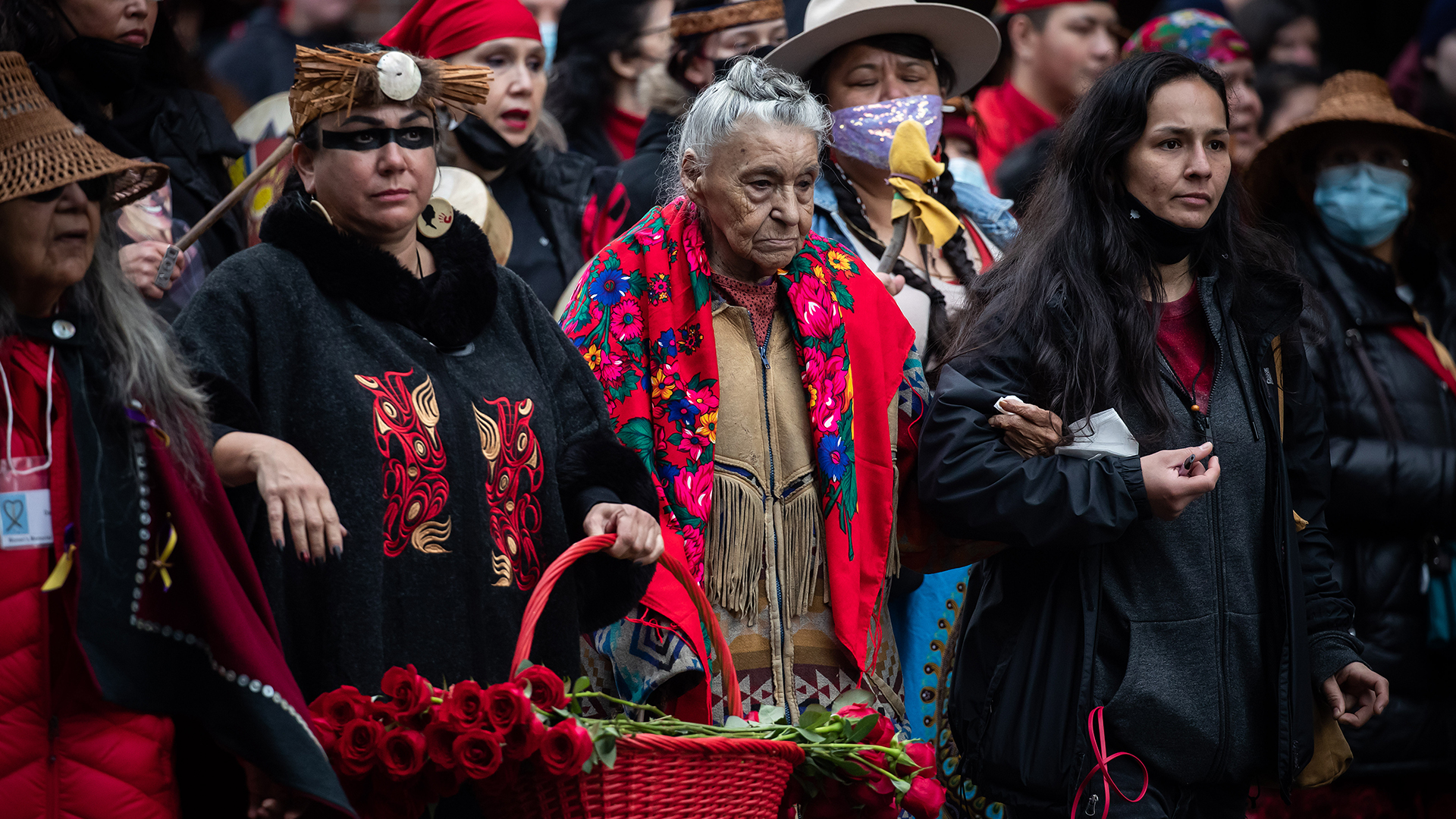
The Canadian Femicide Observatory for Justice and Accountability (CFOJA) released 2021 numbers documenting the killings of 173 women and girls, primarily at the hands of men, on March 7. Since 2018, the CFOJA has documented the violent deaths of 700 women and girls, at least 90 per cent of which have been killed by men. This number includes 37 women and girls already killed in the first two months of 2022.
International Women’s Day on March 8 has as its 2022 campaign theme #BreakTheBias which is meant to help us imagine a gender equal world – “a world free of bias, stereotypes, and discrimination.” For the prevention of femicide, this would also be a world free of misogyny. While there is no legal definition, simply put, misogyny is the “dislike or hatred of, aversion to, or prejudice against women” and, as such, a major obstacle to a gender-equal world.
Despite efforts to bring a visible and national focus to femicide in Canada, society, including our political and social leaders, ignores misogyny as an everyday reality for women and girls and an underlying motivation for many (and likely most) of their killings. Members of the public largely remain unaware that one woman or girl is killed every other day somewhere in our country. The word “femicide” is not commonly used in our everyday conversations or in the media coverage of these killings.
When femicide is used, many think it is meant to demonstrate that women and girls are killed more often than men and boys. However, femicide is not about the number of women killed compared to men. It is not a competition, nor should it ever be.
Rather femicide is about how and why women and girls are killed, which is distinct from how men and boys are killed (although both are killed primarily by men). More specifically, it is context. Women and girls are most often killed while in intimate or family relationships and/or because of sexual violence. This is not true of men.
Acknowledging these distinctions is important to femicide prevention. And using the term “femicide” is about underscoring the role of both individual and systemic misogyny which facilitates, maintains and often provides impunity for the killings of women and girls by men in Canada and globally.
In 2020, data from the United Nations Office of Drugs and Crime (UNODC) showed that globally a woman or girl was killed by someone in their family every 11 minutes. To put this in perspective, the next time you sit down to watch your favourite one-hour television drama, at least five women or girls will be killed at the end of the show. Their killing will be at the hands of someone in their family such as a male partner, a father, or a son. This figure does not capture women and girls killed outside their intimate relationships which represents 42 per cent of women and girls killed globally.
More concerning is that research by the UNODC shows that “the situation has not improved over the past decade, even in places where lethal violence has decreased overall.” As such, it highlights that “urgent and targeted action is needed to empower and protect women and girls, to prevent gender-based violence and save lives.”
In Canada, where a women or girl is killed every other day, figures have also remained stubbornly persistent over time. For 40 years, this fact has varied little. There is some evidence that COVID-19 may have led to an increase, particularly in 2021, as shown by the most recent CFOJA numbers. For example, when numbers in the 2019 and 2021 annual reports are compared, we see that 36 more women and girls were killed in 2021 than in the pre-pandemic year 2019. This is a 26 percent increase in such killings.
These increases in femicide and other forms of male violence against women and girls, correlated with the pandemic, are deeply concerning. What’s equally if not more disturbing, however, is that despite significant social and legal transformations over the past 40 years to address men’s violence against women and girls, this violence has remained persistently stable.
Similarly, those groups of women and girls whom society has made most vulnerable to violence, including femicide, also largely remain unchanged. For example, women and girls remain at most risk from men they know, primarily male partners and sons. Indigenous women and girls, women and girls who live in rural, remote, and Northern regions of our country, and women aged 18 to 54 years also remain at greater risk of femicide.
The 2021 numbers continue to show these and other persistent patterns, including ongoing gaps in our knowledge.
For example, we continue to know little about the risks of Black, South Asian and other racialized women and girls due to a lack of quality data. We know little about how intersecting identities (i.e., race, age, sexuality, disability and so on) compound one’s vulnerability to violence and femicide. We know that firearms are one of the most common methods used to kill women, particularly in non-urban regions, but there is a dearth of information about the type of gun used or if the guns used were licensed.
Mental health challenges are often used to explain, justify and excuse perpetrators. But, we have little systematic information about the role of mental illness to adequately understand its contributions to one’s risk of femicide victimization or perpetration. We do know that most men experiencing mental illness do not kill women and girls, so it is a partial explanation at best.
Finally, and perhaps most importantly, our emphasis on these individual-level risk factors means that we have largely ignored the impact of community- and societal-level risk factors. These continue to impede effective implementation of violence prevention.
For example, systemic misogyny, often coupled with racism, is one of the most pressing community- and societal-level contributors to men’s violence against women. That’s because it continues to breed, protect, and minimize individual misogynist behaviours. Systemic misogyny which is and has been protected by long-entrenched patriarchal social structures creates and maintains a culture in which a gender-equal world can never exist. Prevention policies and programs implemented in a culture rife with these biases, stereotypes and discrimination will fail.
COVID has exacerbated levels of violence already being experienced by women and children. However, it is systemic misogyny that has normalized violence against women and girls historically and today. If left to flourish and grow stronger as is arguably happening now, systemic misogyny – still seemingly invisible to many, including our leaders – will ensure any efforts to eradicate men’s violence against women and girls will fall far short of their goals.
Next year, when the CFOJA releases its 2022 numbers, we wonder whether we will be facing the same old tired questions from the media and hearing the same old meaningless platitudes from our leaders. We know what to do, but the political will to do it is still lacking.
To #BreakTheBias, we need to call out and challenge harmful and discriminatory attitudes about the roles of women and girls in society held by the public, those who work in our systems and institutions, as well as our leaders. And we need to make those individuals accountable for these attitudes.
We need to systematically identify and document misogynist, sexist and racist beliefs and stereotypes that facilitate and maintain persistent levels of male violence against women and girls. These data will help us understand how and why some groups of women and girls are made more vulnerable to violence and why ongoing data gaps are not priorities for our governments. We need to document how these attitudes and their impacts prevent real progress in achieving a gender equal world and, in turn, significant limit the potential of current and future prevention efforts.
What remains to be seen is how many killings of women and girls it will take for our country to say enough is enough.












